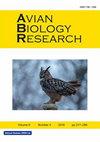基于细胞模型的鸟类生态毒理学评估综述
IF 1.2
4区 农林科学
Q4 AGRICULTURE, DAIRY & ANIMAL SCIENCE
引用次数: 0
摘要
由于畜牧业和疫苗生产行业的需求,禽类物种的基于细胞的模型历来侧重于病毒学。近年来,随着科学家和政府开始转向新的方法方法,这些模型(在卵细胞、细胞系、原代细胞培养、器官切片和器官芯片中)在生态毒理学研究中的使用逐渐增加,最近环境保护局宣布在未来20年内结束哺乳动物试验的备忘录证实了这一转变。这一增长受到鸟类可用标准的限制以及围绕基于细胞的测定外推到体内适用性的未知因素的阻碍。毒理学家已经将这些模型纳入了许多不同的研究中,包括母体沉积、机制、代谢和非靶标分析方法,证明了基于细胞的分析的广泛实用性。在蛋方法是理想的生殖和早期生命阶段发育研究,原代细胞培养代谢分析,细胞系长期研究需要培养,器官切片代谢研究和器官芯片模型预测分析。然而,这些模型都有其局限性,研究人员在选择最适合预期研究的模型时需要考虑这些局限性。目前的迹象表明,未来基于鸟类细胞的模型测试将受益于扩大细胞系中可用的物种多样性和增加全替代方法的代谢保护。卵和原代细胞培养方法也应加以研究,以提高效率并进一步减少动物的使用。本文回顾了这些模型在生态毒理学背景下的使用、局限性和已发表的应用,以了解鸟类细胞模型的现状,并解释未来应该采取的方向,以及如何最好地将现有方法应用于鸟类研究人员正在接近的当前问题。本文章由计算机程序翻译,如有差异,请以英文原文为准。
Ecotoxicology assessments in avian species using cell-based models: A review
Cell-based models in avian species have historically focused on virology due to the demands of animal agriculture and vaccine production industries. Recent years have witnessed a gradual rise in the use of these models (in ovo, cell lines, primary cell cultures, organ slices, and organ-on-a-chip) in ecotoxicological studies as scientists and governments begin the shift to new approach methodologies, a shift validated by the recent memo by the Environmental Protection Agency announcing the end of mammalian testing in the next two decades. This rise has been hindered by the limited standards available for avian species and the unknowns surrounding cell-based assay applicability in extrapolation to in vivo. Toxicologists have incorporated these models in many different studies, including maternal deposition, mechanistic, metabolic, and non-target analysis methods, demonstrating the broad utility of cell-based assays. In ovo methods are ideal for reproductive and early life stage development studies, primary cell cultures for metabolic analysis, cell lines for long term studies requiring culture, organ slices for metabolic research, and organ-on-a-chip models for predictive analysis. These models all have their limitations that researchers need to consider when choosing which is most appropriate for the intended research, however. The current indications are that future avian cell-based model testing would benefit from expanding the species diversity available in cell lines and increasing metabolic conservation in full replacement methods. In ovo and primary cell culture methods should also be examined to increase efficiency and further reduce animal usage. This review examines the use, limitations, and published applications of these models in an ecotoxicological context to understand the current state of avian cell-based models to explain what future directions should be taken and how best to apply the methods available to current problems that avian researchers are approaching.
求助全文
通过发布文献求助,成功后即可免费获取论文全文。
去求助
来源期刊

Avian Biology Research
农林科学-奶制品与动物科学
CiteScore
1.50
自引率
0.00%
发文量
17
审稿时长
2 months
期刊介绍:
Avian Biology Research provides a forum for the publication of research in every field of ornithology. It covers all aspects of pure and applied ornithology for wild or captive species as well as research that does not readily fit within the publication objectives of other ornithological journals. By considering a wide range of research fields for publication, Avian Biology Research provides a forum for people working in every field of ornithology.
 求助内容:
求助内容: 应助结果提醒方式:
应助结果提醒方式:


